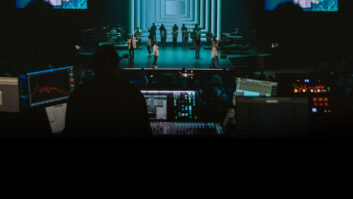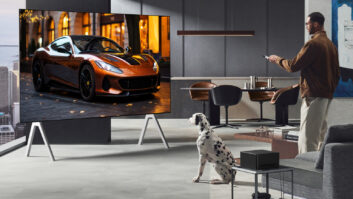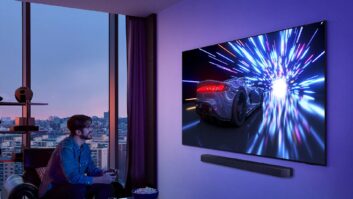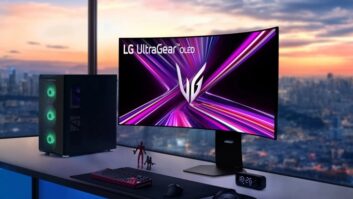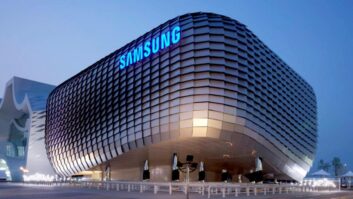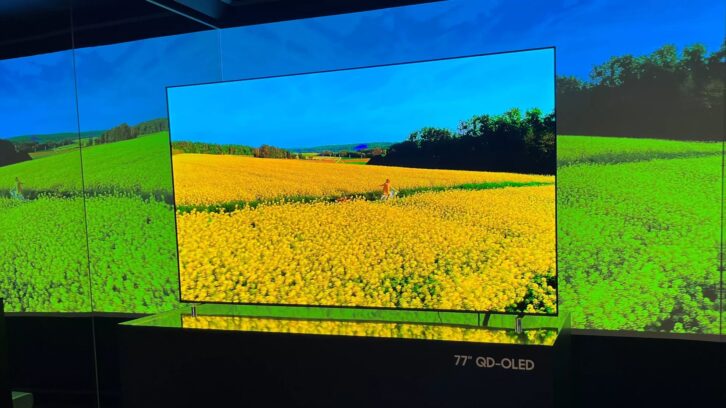
Editor’s Note: This article originally appeared on TechRadar. Read more from the TV Experts on TechRadar here.
When you think of the best TVs, OLED is probably the first word that comes to mind. With vibrant color reproduction, deep blacks and excellent contrast, OLED sits at the top of the TV mountain. One thing OLED TVs have always lacked is brightness, often suffering from glare in bright rooms.
When Samsung introduced the S95B in 2022, its first with QD-OLED technology, the TV market was taken by storm. Here was a new type of screen that aimed to solve OLED’s brightness issue once and for all. Thankfully, it did just that – as we noted in our review, it measured a peak brightness output of 1,060 nits in Standard mode. That output beat the LG G2, which measured at 960 nits in Standard mode, and this was the TV LG said would solve all brightness issues among OLEDs.
Shortly after, the Sony A95K arrived, and though it didn’t quite hit the brightness levels of the S95B, it had one of the best pictures on a TV, ever. So stunning was the picture, it earned its place amongst the best OLED TVs. As wonderful as this all sounds, why were sales figures disappointing? Samsung reportedly aimed to sell 600,000 units of its TV but managed just over half of this with 350,000 units sold (via Sammobile).
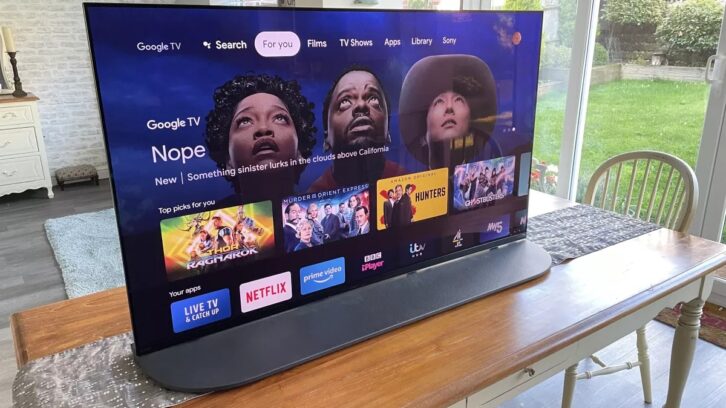
A big factor in this, especially in the case of the Sony A95K, was the price. Upon launch, the Sony A95K retailed at $2,999 for the 55-inch model. The 55-inch LG G2 retailed at $2,199 when it launched. As the G2 was released in March 2022 and the Sony A95K in June 2022, LG had already started discounting the G2. Regular OLED, therefore, kept its place at the head of the table.
In 2023, two new TVs from Samsung debuted – the S90C and the S95C. In our reviews, we measured peak brightness for these two TVs at 1,100 and 1,400 nits, respectively. Probably a slightly more important factor was they both had stunning images and features that matched the LG’s W-OLED (white OLED, the regular OLED panel that lacks the quantum dot layer found in QD-OLED sets) TVs with no problem.
The S95C comes with the hefty price tag you expect from QD-OLED so does this mean W-OLED is safe? It doesn’t. In March 2023, we said that the end was nigh for regular OLEDs and now, that time is here. QD-OLED TVs are the TVs we’ve been waiting for.
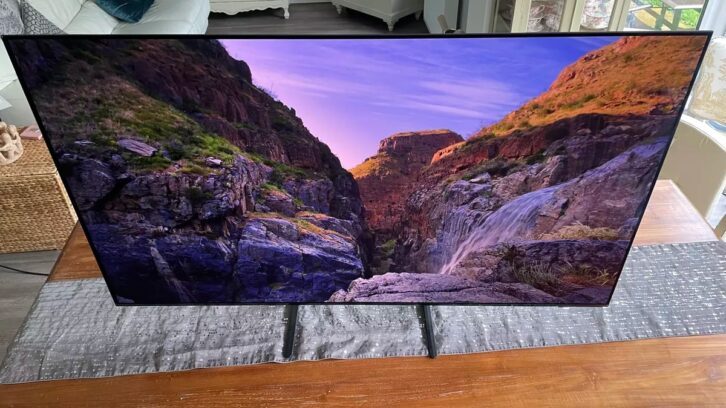
Samsung’s S90C: the W-OLED’s harbinger of doom
As we said above, the Samsung S90C doesn’t carry the same brightness as the S95C (or even a lot of mini-LED TVs), but it does hit a sweet spot. The S90C is bright enough to handle a lot of the glare problems that W-OLEDs suffer from. The 1,100 nits measured in the S90C are much higher than one of its rival OLEDs, the LG C3, which measured at 830 nits peak brightness.
If you like to watch your TV in more darkened conditions, we said in our S90C review that some people may prefer the “slightly gentler, less explosively dynamic look” of the S90C in comparison to the S95C or, say, a much brighter mini-LED TV. The S90C really does cover lots of lighting conditions, and with a load of gaming features as well, it sits among the very best gaming TVs.
Not only this, but the S90C has a refined and rich picture with vibrant colors that a lot of TVs could only hope to achieve. Thanks to the improved brightness and detail within the S90C, it even tops the much-lauded S95B.
Now, why is the S90C the “harbinger of doom” for traditional OLED and not the S95C or the sensational Sony A95K? It comes down to value for money. The S90C is significantly cheaper than either of these models and as a bonus, it’s just roughly $100 more than the LG C3! So you’re getting an exciting QD-OLED with a lower price tag, and that’s exactly what we like to see.
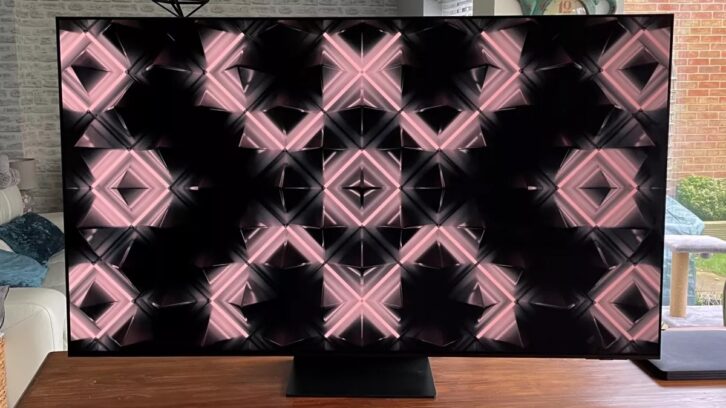
Seeing is believing
During my time working for a major UK-based TV retailer, I witnessed the arrival of QD-OLED and its impact on the TV market firsthand. Before QD-OLED screens arrived, W-OLED was the clear favorite of customers. Brand loyalty often decided which OLED these people would go for, be it LG, Sony, Panasonic or Philips, but the trend was clear, OLED was the top dog.
Then, the Samsung S95B and Sony A95K arrived in 2022 and brought in the QD-OLED era. Customers, and needless to say the staff, were drawn to these TVs because the picture balanced everything so well. I didn’t think it could get better, and then the Samsung S95C arrived in 2023.
As the 77-inch S95C was mounted on the wall, it looked very sleek, thanks to its razor-thin body. Immediately, we tried all sorts of movies on it, like Top Gun: Maverick, The Batman and Star Wars. With these playing through one of the best 4K Blu-ray players, the Panasonic DPUB9000, the picture was sensational and captured all the best parts the QD-OLED from 2022 had brought to the table and amplified them.
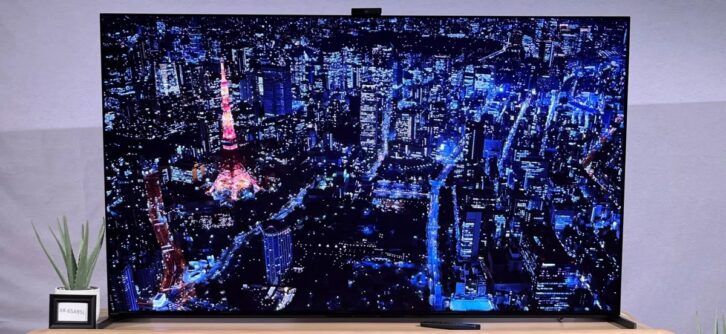
Is the best yet to come?
We’re still in the relatively early days of QD-OLED technology, so, hopefully, it can only be improved from here. When we had a hands-on with the Sony A95L, which wasn’t even completely ready, we were blown away by its image quality. Even though it was only available to view in the often inaccurate and overblown Vivid picture mode, we said: “picture detail, unsurprisingly, was excellent, with the new A95L even appearing to beat last year’s model (A95K) on this parameter.” The A95L appears to have taken things to the next level, and we can’t wait to get a thorough test of it.
Although W-OLED isn’t technically dead just yet, with Samsung even reaching a deal with LG to use its OLED panels, OLED is already having to evolve. The LG G3 uses a Micro Lens Array (MLA) panel to increase its brightness by up to 70%, according to LG. That’s because LG knows it has to compete with QD-OLED technology. For what it’s worth, I think QD-OLED has already won. It has superior picture quality that regular old OLEDs could only dream of achieving. I say OLED is dead, long live QD-OLED!
See also: SKYWORTH USA Debuts World’s First Outdoor Google TV




